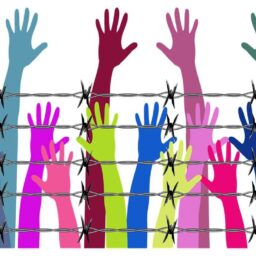INTRODUCTION
According to World Health Organization, “female genital mutilation, or commonly known as ‘FGM’, comprises all procedures that involve partial or total removal of the external female genitalia, or other injury to the female genital organs for non-medical reasons.” 200 million women and girls have already undergone FGM in 31 countries and approximately 3 million women and girls are risk of undergoing the same every year.
Kinds and Impact of FGM
According to WHO, Department of Reproductive Health and Research, 2008, FGM can be divided into four categories: clitoridectomy, excision, infibulation and normal. Traditionally, the women designated for this work use blades, knives, sharpened glass or even stones sometimes to perform FGM on the community girls. In recent times, FGM is also performed by medical practitioners. Regardless of the method, all of the categories cause immediate and long-term harm with no health benefits known to date. Immediate complications include bleeding, pain, sepsis, urine infection and injury to adjacent genital tissue. Long-term physical health consequences can result into keloids, fistulas, cysts, infertility, persistent such as urinary or bladder and increased risk of childbirth complications. Women and girls undergoing FGM has a higher rate of neonatal death compared to the ones who have not. Apart from physical complications, the experience causes emotional challenges like nightmare, depression, panic attacks and in some cases post-traumatic stress disorder.
FGM in International Law
Due to its impact on the subjects, UN has already declared FGM as a gross violation of human rights under various international instruments. General Recommendation Nos. 14, 19 and 24 of Convention on the Elimination of All Forms of Discrimination Against Women (CEDAW) connote FGM as a form of violence against women and recommend state parties to take appropriate measures to eliminate this practice. It is considered to be a gross violation of the right to be free from all forms of discrimination against women under article 1 of CEDAW, article 2 of the Universal Declaration of Human Rights (UDHR); along with a violation of the right to life and physical integrity, including freedom from violence under article 1 and 3 of UDHR, the preamble of the International Covenant on Economic, Social and Cultural Rights (ICESCR), article 9(1) of the International Covenant on Civil and Political Rights (ICCPR), and article 19 of the Convention on the Rights of the Child (CRC). FGM is mostly performed on underaged girls, hence it violates article 3, 5 and 24(3) of CRC in such cases. In general, all types of FGM are a violation of right to health under article 12 of ICESCR and in case of death caused during or due to the performance of FGM violates article 6 of ICCPR. Pursuant to the international instruments, many countries have banned FGM enacting domestic laws.
Origin of FGM
Originated in Egypt, the instances of FGM can be found all over the world. Although the norm is highly prevalent in the African countries, instances can be found in different countries of Middle East, South Asia, South-East Asia as well. A common misconception is FGM is an Islamic tradition. In reality, no religious scripts prescribe the practice (WHO) and the Muslim Council of Britain declared it to be un-Islamic. Rather it is a cultural norm developed in certain regions and continued to exist till this day.
The Cultural Significance
FGM is not a geographic tradition rather a cultural phenomenon practiced by distinct ethnic groups. From Eurocentric perspective FGM is an embodiment of subjugation, subordination of oppression against women. But in the social context of the regions, FGM is an important component in the socialization of the girl into the social, familial, sexual, and reproductive role of the woman (Anne M. Gibeau). In addition, FGM confers upon a girl her eventual eligibility for marriage, which often is the only economic option for most women in these cultures (Gibeau). Even the women performing FGM hold significant importance in the society as the bearer of their tradition. Without FGM, girls/women and their families have to undergo different kinds of mistreatment, discrimination and those in those societies. Although it may be difficult to justify FGM from the Eurocentric point of view or even understand it in the context of the culture in which it is practiced, it is important to not disregard such cultural reality.
The Conflict between Culture and Law
The core reason for extremely slow reduction of FGM is the conflict between laws and culture. It is rather common to observe conflict between these two owing to the Eurocentric nature of universal legal instruments and their limited or little relevance to different regional context. While striking a balance is a common objective, often they are so contradicting that such a balance becomes infeasible to ensure. Then the question arises: which one should prevail? It is an undisputed fact that cultural practices play a huge role in shaping the social, political and legal framework of a state/region, but that does not necessarily make every such practice a good practice. Especially when it comes to distinct practices relating to women, misogyny can be seen to play a huge role in shaping those practices. The former Hindu tradition of ‘Sati’ (burning the widow alive along with her deceased husband) can be an apt example of it.
It is necessary to consider the victim’s opinion or perspective while determining whether a cultural norm, although conflicting with the universally recognized human rights, should prevail or not. The harmful impact of FGM on mental and physical health of the victims are clinically proven. Many victims of FGM advocate against this culture. But at the same time, many of them also advocate for it considering the social, political and economic reality. Due to this conflict between laws and culture, the tradition of FGM still prevails in many countries for the sake of social security at the cost of women’s physical health and in some cases, their lives.
Conclusion
Contextualization and universalism are not necessarily exclusive of each other. It is still feasible to adopt contextualized mechanism of implementation to achieve universal level of protection in regard with human rights. While there is still no absolute way to solve the conflict between culture and standard human rights in every case, regarding FGM the desired primacy is rather clear. FGM is a violation of various human rights and the existence of a large-scale cultural tradition cannot be a justification for killing thousands of girls and women, and injuring millions of others. After all,
“The most dangerous phrase in the language is we’ve always done it this way.”
– Grace Hopper
Author(s) Name: Sal Sabil Chowdhury (University of Dhaka)






